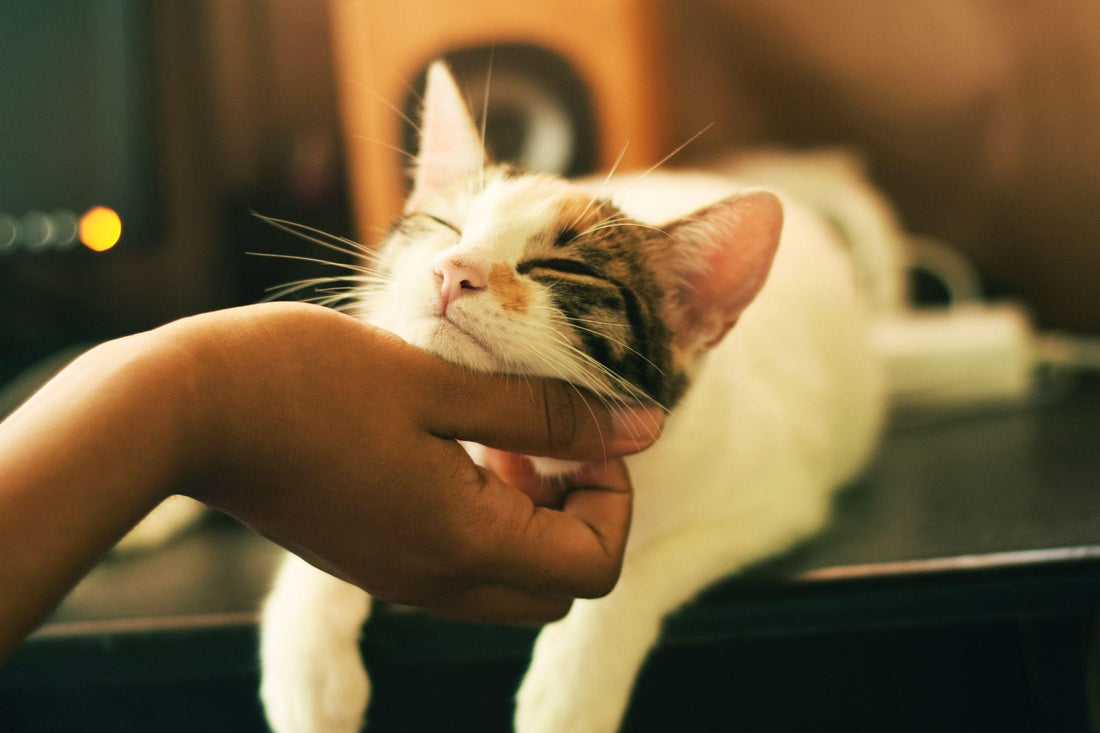
Read Your Cat's Body Language
Share
Understanding cat body language
Cats have a reputation for being mysterious and difficult to read. Unlike dogs, who tend to be very expressive, cats often share what they are really thinking in much more subtle ways.
However, that doesn’t mean they’re impossible to read. The good news is that, with a bit of practice, you can quickly get confident with reading your cat’s body language.
Check out this quick guide to reading your cat’s body language, and find out how to spot and understand the clues cats give their owners about how they really feel.

Reading cat body language
Do you ever feel like your cat is aloof and unpredictable? That might be simply because you’re not quite reading their language right.
Your cat is always trying to communicate with you through its gestures and body language. That means that to know your cat better, you need to know more about its body language.
The sweeping of the tail or rubbing of the cheeks, pricking of the ears or purring under breath - every little sound or gesture has a significance of its own.
Your cat will often rub its cheeks against you or against the cheeks of another cat. Through this it is actually trying to pick up or leave scent markers so that it can create future physical contact.

Importance of tail movement
The tail is the most important part of your cat’s body as it indicates a variety of actions and reactions.
The tail often denotes its mood and intention. If your cat is sweeping its tail in broad gestures, then it symbolizes annoyance or impatience at your excessive petting.
If you continue to cuddle your cat, they might respond by growling softly or batting at you with their paws. A rapid sweeping of the tail back and forth, right from the center, shows your cat is feeling extremely agitated.
If you find your cat turning their body fully sideways and extending their bristled tail upwards, then you can be sure that your cat is about to enter into conflict with fellow cats.
When your cat is busy trapping prey, you will find them to be more cautious, opting for subtle movements and inflating their tummy whilst all the time intently aiming at the prey.
Often you will find your cat lowering their tail to tuck it between their legs, which shows their complete obedience.
A raised tail also indicates that your cat wants to be friendly, and a twitching of the tail will confirm that they are pleased to be with you. You’re especially likely to notice this signal if your cat has been left home alone for a period of time whilst you have been out of the house.

Movement of other body parts
Along with the tail, cat body gestures speak volumes about their mood and behavior. While bent legs denote self-defense, outstretched legs will denote self-confidence and self-assurance.
If your cat’s ears are back and their body low, that usually shows shame or remorse. Pricked ears will denote interest in something that is happening.
If you find your cat has their head completely lowered then that indicates boredom.
Sneaking along subtly with their head lowered and close to the ground is a warning sign that your cat is stalking a victim and about to pounce.

Learning your cat’s language
Knowledge about these cat behaviors will definitely strengthen the bond between you and your cat.
It can take time to get used to reading these signs, so don’t be discouraged if you misread your pet’s signals from time to time.
The more you practice looking carefully for clues, the more confident you will feel about understanding what your cat is really saying to you.
Over time you’ll find that you’re no longer the victim of your frustrated pet’s biting or clawing because you’ll know just what to do and when.
Remember to bookmark this guide so you can come back to it and double-check to confirm your suspicions whenever you need to.
Share with a fellow cat-lover and help them to improve their relationship with their feline friend too!
If you enjoyed this blog, you might also enjoy How do cats purr and why?
